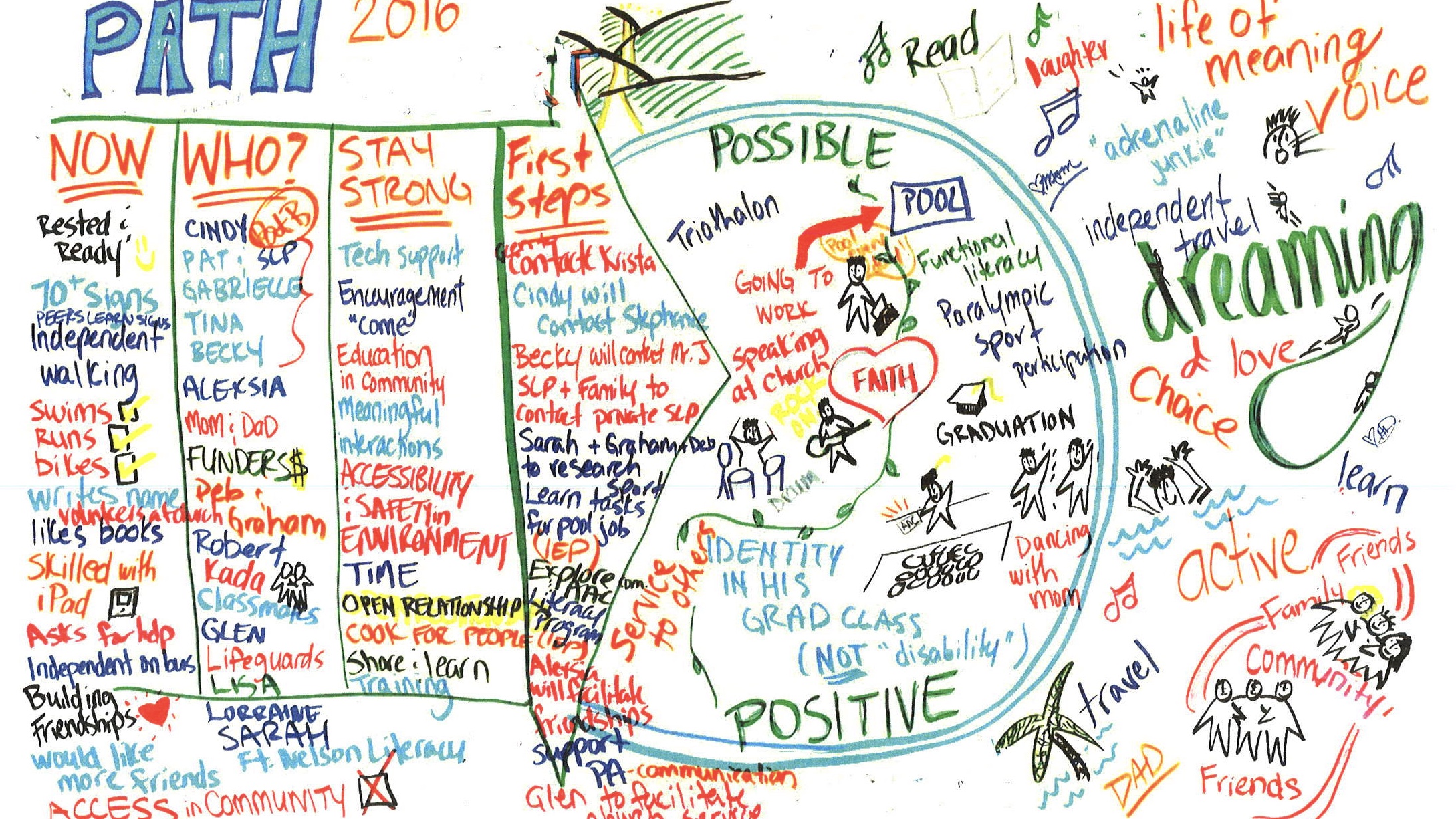Module 5: Roles and Responsibilities—Inclusion and the Educational Team
PATH: Planning Alternative Tomorrows with Hope
Out of curiosity, the writing team for the four courses tallied up their years of experience. It was in the hundreds of years. You can imagine that this meant there was a lot of knowledge, thoughts, ideas, and wisdom on what to include in the individual modules of each of the four courses. Too much actually, so we had to practice what we have been teaching—choose wisely. So, as we wrap up Course 1, we felt it was important to leave you with one more example that embodies our philosophy of practice: PATH – Planning Alternative Tomorrows with Hope.
What is PATH?
PATH is a person-centered planning tool used to develop a positive and possible vision for a student’s educational program. Co-created by John O’Brien, PATH uses graphic facilitation to illustrate the path to a positive and possible future. This tool is consistent with Inclusion Outreach’s quality of life philosophy. Inclusion Outreach staff are trained PATH facilitators and we offer PATH sessions for both distance and in person school visits. The student or their family or advocate invites family members, friends, and members of the student’s extended school team to dream and plan for an ideal future for the student.
The use of the PATH tool has been highly successful in bringing school teams and families together and solidifying the relationships of team members while focusing on the student’s future needs. The PATH featured below was done for Josh when he was a student in high school.

Planning Alternative Tomorrows with Hope
What a PATH Session Looks Like
PATH involves two facilitators: a process facilitator and a graphic illustrator. The process starts with dreaming. The student, their family, and other participants are asked to imagine an ideal future identifying things that are valued most. The graphic facilitator draws the ideas that have been generated. For example, in the PATH pictured above, friends are identified as part of the dream.
When we finish dreaming, we back up a step and talk about what is possible and positive. This part of the PATH process decides on a time frame to work on goals, skills, and activities that will bring the student closer to their dream. In Josh’s PATH, the time frame was graduation and having an identity in his grad class was something possible and positive that he wanted to work toward.
Now we move backwards on the sheet of paper to where we are NOW. We talk about what is in place and identify what we need to work on. In Josh’s PATH, building friendships and having more friends were identified. WHO identifies the people already in Josh’s life, and people who need to be recruited to help further his goals. STAY STRONG applies to everyone on this journey. What support will be needed to keep Josh and his family strong? What will the school need to stay strong in their support for Josh? Next, we identify the First Steps that need to be taken in the next two to three weeks and assign people to be responsible.
PATH is a process that unites a group of people with a wide variety of skills and interests toward the common goal of helping Josh achieve his dreams. It is a future-oriented, collaboration tool that encourages team members to think beyond their usual roles and share their collective expertise.